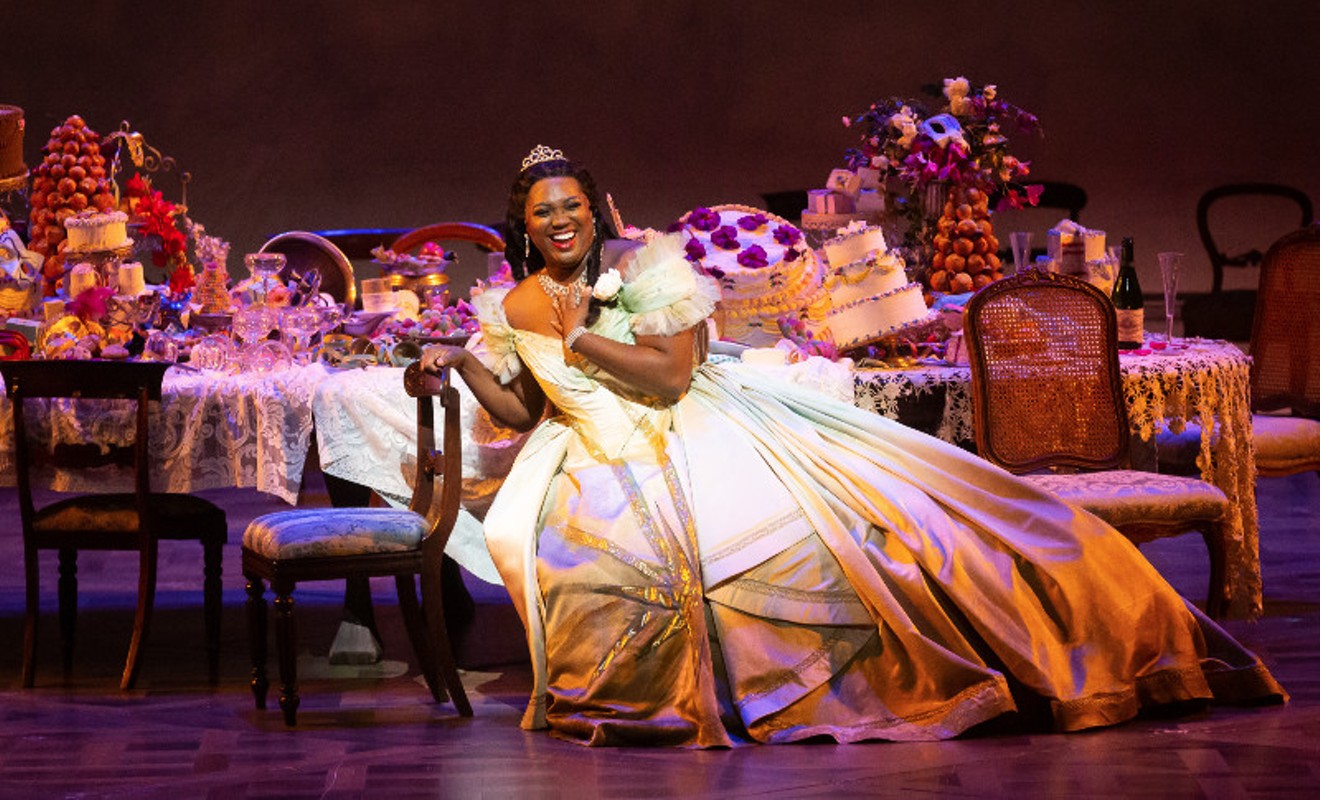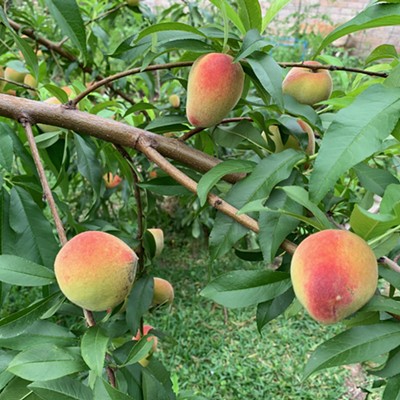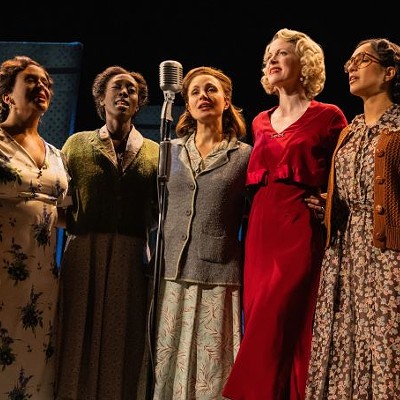Support Us
Houston's independent source of
local news and culture
account
- Welcome,
Insider - Login
- My Account
- My Newsletters
- Contribute
- Contact Us
- Sign out
In HGO's La Traviata it's Verdi's Music That Was the Star on Opening Night
D. L. Groover October 22, 2022 7:11AM

Soprano Angel Blue in HGO's La Traviata
Photo by Lynn Lane
[
{
"name": "Related Stories / Support Us Combo",
"component": "11591218",
"insertPoint": "4",
"requiredCountToDisplay": "4"
},{
"name": "Air - Billboard - Inline Content",
"component": "11591214",
"insertPoint": "2/3",
"requiredCountToDisplay": "7"
},{
"name": "R1 - Beta - Mobile Only",
"component": "12287027",
"insertPoint": "8",
"requiredCountToDisplay": "8"
},{
"name": "Air - MediumRectangle - Inline Content - Mobile Display Size 2",
"component": "11591215",
"insertPoint": "12",
"requiredCountToDisplay": "12"
},{
"name": "Air - MediumRectangle - Inline Content - Mobile Display Size 2",
"component": "11591215",
"insertPoint": "4th",
"startingPoint": "16",
"requiredCountToDisplay": "12"
}
]
In the world of theater, Shakespeare's Macbeth swirls with superstition. If one is performing it, you may not say the title out loud, especially backstage. You must call it, “The Scottish Play.” Why ill omens and foreboding follow this play is a mystery to all, but at Houston Grand Opera, I think Verdi's immortal La Traviata (1853) may be cursed as well. The last three iterations at HGO of the world's most performed opera have been minor disappointments.
Following the devastating wake of Hurricane Harvey, when the opera's home, the Wortham Theater Center, was 15 feet under water, the intrepid magicians configured an opera house out of an exhibition space in the George R. Brown Convention Center. They dubbed it the Resilient Theater. Ingenious, yes, successful, not so much with Traviata. West Side Story and Elektra fared much better, especially when the orchestra was relocated to the side of the cavernous stage. Traviata had its orchestra way upstage behind the singers, which muffled the impact of Verdi's sublime orchestration. A tripartite production between HGO, Lyric Opera of Chicago, and the Canadian Opera Company, the Arin Arbus presentation was heavy on symbolism, with Flora's masked ball outdoing anything seen on Pacific Street on a Saturday night. The 2011 season revival was from Lyric Chicago alone, a dusty-looking Desmond Heeley production with dusty singing.
Now, the 2022 HGO season opens with the Arbus production that should have opened before Harvey wrecked Houston. It has proper sets, a semi-curved back wall (instead of that transparent shower curtain from the Resilient), and a roster of better singers. There are also shadows that follow the revelers at Flora's party or the carnival in Act Four when Violetta is dying. It's like watching Eisenstein's Ivan the Terrible, where every Russian drags around his own doppelganger, except it works a lot better in a cinematic Renaissance Moscow than 19th-century Paris.
I had faint madeleine moments during the overture when Violetta, seen through the scrim, rises shakily from her divan and struggles to get dressed for her party. This pantomime looked familiar. When the scrim rose and the party burst into motion, I knew I had seen those immense glossy pastries before. Uh, oh, this is the Resilient Traviata, only in its original brick-and-mortar version. It looked handsome enough, but those new shadows were annoying.
Except for Flora's wild party in Act II, with its male dancer wearing plastic female breasts and those fantastic skeletal bulls (Flora throws an hallucinogenic Spanish-themed shindig), I forgot all memories of this former production. This version seemed to work. Seemed is the operative word.
Traviata is based on Alexandre Dumas fils' classic tale of 19th-century courtesan Marguerite, the Lady of the Camellias (called Violetta in the opera, soprano Angel Blue), who falls in love with middle-class Armand (Alfredo, tenor Matthew White). It's a basic triangle, as solid as Pythagoras. The third leg is Alfredo's father, Georgio Germont (baritone Andrei Kymach), who convinces Violetta to leave his son so the family won't be ruined by scandal. Reluctantly, she goes back to her former life and her former lover, the Count. At Flora's, Alfredo scorns her by throwing his gambling winnings in her face as final payment for her services, and, in Act IV, she dies by tuberculosis, just as Alfredo rushes to her side after his father confesses that he forced her to give him up. Love does not save the day. Conventional morality has ruined all their lives.
The definitive film version is the 1936 MGM Camille, with Greta Garbo expiring under the sensitive direction of George Cukor and the luminous lighting of cinematographer William Daniels. (We forgive Robert Taylor for his wood-like impersonation, because, really, who can compete with Garbo's incandescence.)
Verdi surrounds his tragic story (libretto by Francesco Piave) with his most magnificently tuneful music. Written after Rigoletto and Trovatore, and just before the masterpieces to follow, Un Ballo in Maschera, Don Carlos, Aida, The Requiem, Otello, and Falstaff, this is Verdi hitting his prime. You hear tinges from the former operas, but also swathes of what is to come – the apt characterization in music, the deeper emotions, the great theatricality of it all.
What is more giddy than Violetta's paean to love and to-hell-with-her-illness than her coloratura credo from Act One, “Sempre libera” (“Always free”), as she swoops up and down the scale in treacherous filigree holding a champagne flute. She's one happy prostitute. (Blue smashed the glass on the table and part of it went rolling into the orchestra, where you could hear it breaking on the pit's floor.) There's elder Germont's barcarolle, “Di Provenza,” a lilting lullaby to remind Alfredo what he's missing in bucolic Provence, or Alfredo's tender declaration of blissful love, “De' miei bollenti spiriti” (“My happy spirits”). There are arias upon arias, each more beautiful, each more direct. The chorus gets its own workout, this is Verdi after all, the master of choral work.
But something has gone slightly off in this revival. The three major singers are highly regarded, respected, and lauded – Blue has won a Grammy for her recording of Porgy and Bess and has sung in every major opera house in the world; White has won the Deborah Voigt International Vocal Competition and is a young singer on the rise; and Kymach, a native Ukranian, has won the BBC Cardiff Singer of the World. It quite a triad. But they don't gel. There's no fire between Violetta and White. Are they in the same opera? All three sound tired. Could it be opening night jitters? Perhaps, but they're all pros.
Blue possesses a lovely voice, warm, lush, and deep, especially in her softer moments. Her “Addio” in Act III is absolutely lovely, exquisitely phrased. But when she pushed above the scale, when she sang full out, she veered a bit out of focus. It wasn't what I was expecting. White certainly looks the role with his handsome blond ponytail and dashing sleek physique, but his voice lacked oomph. He hit all his notes without effort, but he seemed far away. Kymach had a rough night of it. His voice sounded shredded. When he sang softly, he sounded fine, but just soft. Any louder, he lost it. Was it an off night for everyone?
The maestro, famed composer Matthew Aucoin (Euridice, Crossing and Second Nature), a MacArthur Fellow, couldn't find the fire in Verdi. It was a slow burn, to be sure, at times radiant in texture and detail, but the passion was missing. To be honest, the whole evening was missing; a trifle dispiriting. No Verdi performance should sound like a rehearsal.
Curse of Traviata? Or one of those rare off-nights that happen no matter who's on stage or conducting?
La Traviata continues through November 6 at 7:30 p.m. October 29, November 1 and 4; and 2 p.m. October 23 and November 6 at the Wortham Theater Center, 501 Texas. Sung in Italian with surtitles. For more information, call 713-546-0200 or visit houstongrandopera.org. $26-$250.
KEEP THE HOUSTON PRESS FREE...
Since we started the Houston Press, it has been defined as the free, independent voice of Houston, and we'd like to keep it that way. With local media under siege, it's more important than ever for us to rally support behind funding our local journalism. You can help by participating in our "I Support" program, allowing us to keep offering readers access to our incisive coverage of local news, food and culture with no paywalls.
D.L. Groover has contributed to countless reputable publications including the Houston Press since 2003. His theater criticism has earned him a national award from the Association of Alternative Newsmedia (AAN) as well as three statewide Lone Star Press Awards for the same. He's co-author of the irreverent appreciation, Skeletons from the Opera Closet (St. Martin's Press), now in its fourth printing.
Contact:
D. L. Groover
Trending Arts & Culture
- Reviews For The Easily Distracted:
The Fall Guy - The 10 Best And Most Controversial Hustler Magazine Covers Ever (NSFW)
- Top 5 Sickest Stephen King Sex Scenes (NSFW)
-
Sponsored Content From: [%sponsoredBy%]
[%title%]

Don't Miss Out
SIGN UP for the latest
arts & culture
news, free stuff and more!
Become a member to support the independent voice of Houston
and help keep the future of the Houston Press FREE
Use of this website constitutes acceptance of our
terms of use,
our cookies policy, and our
privacy policy
The Houston Press may earn a portion of sales from products & services purchased through links on our site from our
affiliate partners.
©2024
Houston Press, LP. All rights reserved.





